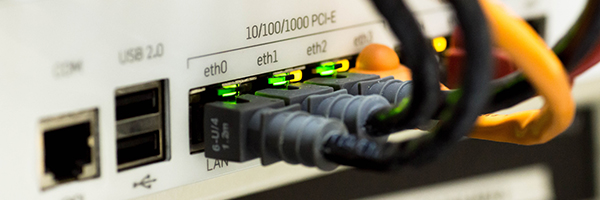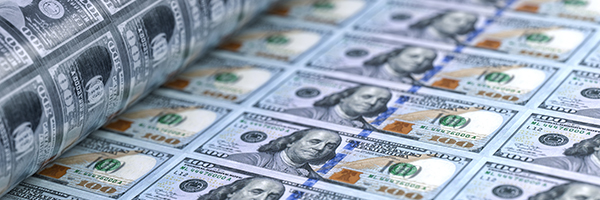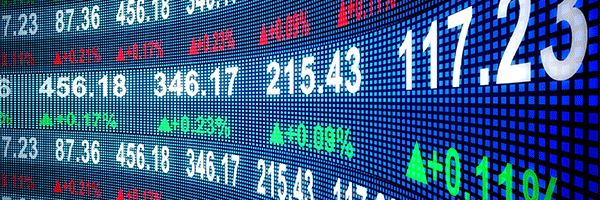 April 26, 2025
April 26, 2025
What You Need to Know Today:
“Meaningless” job numbers look okay this morning
Total nonfarm payroll employment rose by 151,000 in February, and the unemployment rate rose just a tad to 4.1%, according to the Bureau of Labor Statistics today
Would I prefer a decent jobs report like this–the labor market, the report said, remains solid–to a poke in the eye with a sharp stick–or big negative number? Certainly. I’m not rooting for a recession. Too much pain for too many people–especially for those of us who don’t have much to begin with. But the report is, basically, meaningless if you want to know where the economy or jobs market is now or even where it was on February 28.

China’s DeepSeek news leads to AI stock rout–do you think AI stocks might have been overvalued?
News that DeepSeek a China AI startup had developed an open-source AI model that matched the performance of U.S. AI models from OpenAI, Alphabet, and Meta platforms at a fraction of the cost sent AI stocks reeling today, Monday, January 27. Nvidia (NVDA) shares fell 17%. Broadcom (AVGO) similarly fell 17%. The Dow Jones Industrial Average added 0.4%. A gauge of the “Magnificent Seven” megacaps slid 3.2%. The Russell 2000 slipped 1.3%. Wall Street’s “fear gauge”—-the VIX—soared 20% the most since mid-December to almost 18.The yield on 10-year Treasuries declined 10 basis points to 4.53%. The Bloomberg Dollar Spot Index rose 0.1%. Bitcoin fell 3.9%. Here’s what freaked out the markets today.

Saturday Night Quarterback Part 2, on a Sunday says, For the week ahead expect…
This week its earnings, earnings, and earnings. From the tech giants and more. This week, we’ll discover three things. First, are tech company earnings as good as the market clearly expects. I think that with the exception of Apple (AAPL) and Tesla (TSLA) the answer will be Yes. Second, how much of this good news is already priced into the recent rally. These stocks could retreat even on news that’s as good as expected. An advance will, I think, require a surprise or two. And, third, how worried is Wall Street really, given the recent boom in all things AI, about capital spending at the big AI companies and falling profit margins.

Saturday Night Quarterback says, For the week ahead expect…
I expect Wednesday’s meeting of the Federal Reserve’s Open Market Committee to be the big event. Not because the Fed will do anything unexpected on interest rates. It won’t change its benchmark policy rate now at 4.25% to 4.50%. But because the Fed might say something that hints on whether and when it might cut interest rates again.

Trump tells Fed that interest rates are too high
That was quicker than I expected. On Thursday President Donald Trump used a virtual address at the Davos World Economic Forum to pick a fight with he Federal Reserve and Fed chair Jerome Powell. I wasn’t expecting the President to go after the Fed until Wednesday, January 29–assuming, as now looks just about certain, that the Fed doesn’t cut interest rates at its meeting that day.

Special Report: 10 stock picks for the 3 hottest sectors in 2025–and when to buy them: Part 1 AI
In 2025 you will want your portfolio fully weighted toward AI, ENERGY, and WEIGHT-LOSS DRUG stocks.
Not just any stock in those sectors, of course. All three sectors will be full of surprises and they won’t play out the way the conventional wisdom now believes. Some stocks in these sectors will do just okay as a rising tide lifts all boats. But some stocks will be GREAT. These winners could be the foundation for another great year for your portfolio. In fact, I expect that 2025 will be a tough year for an investor to make money even if stocks do finish higher. That’s because the year will be filled with more than the usual twists and turns designed make you sell on fear just when you should be holding on or even buying more. And don’t think that the year won’t include more than one of those moments rallies designed to suck you in at the top because–well, because you fear missing out. Yes, FOMO, fear of missing out will be alive and well in 2025. To do well in 2025, you’ll have to not only pick the hot trends, but also understand when that trend is about to zig zag and which stocks you’ll want to ride through all the noise and chaos. Giving you what you need for profits in 2025vis what this Special Report: 10 stock picks for the hottest sectors of 2025 is all about.And there’s no better sector to demonstrate the challenges of 2025 than Artificial Intelligence, the first of my hottest sectors for 2025. (The next two hot trends, energy and weight-loss drugs will follow in the next few days.)

Special Report: 10 Penny Stock Home Runs–Pick #1 LAZR, #2 PILBF, #3 GWH, #4 NLLSF, #5 LYSDY, #6 VWDRY, #7 LCCTF
Usually I start off one of these stock-picking Special Reports by building a paradigm that I can use to screen for the kind of stocks I’m looking for. For this Special Report: 10 Penny Stock Home Runs I’m going to reverse that process and begin with the 10 picks.My first pick is Luminar Technologies.
Live Market Report (20 minute delay)

Oil falls again on doubts that OPEC will cut production
Oil declined for a third day with U.S.benchmark West Texas Intermediate falling another 0.73% to $74.99 a barrel. International benchmark Brent crude fell 0.65% to $80.06 a barrel. OPEC meets on November 30 and there’s good reason to doubt that the cartel will agree to cut production even in the face of falling oil prices.

Saturday Night Quarterback (on a Sunday) says, For the week ahead expect…
I expect a week heavy with Fed-speak with the Federal Reserve’s pre-meeting quiet period due to start on Saturday, December 2, this week is the central bank’s last chance to shape market sentiment before the December 13 meeting of the Open Market Committee. That’s the Fed body that sets interest rates, just in case you’ve forgotten. The December 13 meeting date also includes the release of the quarterly update of the Fed’s Dot Plot projections on interest rates, inflation, GDP growth, and unemployment for 2024.

The tough end of the credit cycle shows up in drop in U.S. venture capital funding
The US-based venture capital funding deals fell 40.6% in January-October 2023 from that same period in 2022, according to GlobalData’s Financial Deals Database. In dollar terms venture deals fell by 43.56% year-over-year.The US accounted for 35% of the total number of venture capital funding announced globally during January-October 2023. Meanwhile, its share of the total disclosed funding value stood at 48.8%.

It looks like the job market is slowing–although data is inconclusive
Initial claims for unemployment fell by 24,000 to 209,000 in the week ending November 18, the Labor Department said n Wednesday. That was the biggest drop since June. Continuing claims, the number of people continuously receiving unemployment benefits, slipped to 1.84 million in the week ended Nov. 11. That was the first drop in two months.

Have a wonderful Thanksgiving filled with friends and family
No turkeys here in Italy so we’re making a pork roast with rosemary. At a farmhouse in Umbria with friends for the holidays. Someone saw a wild boar today on her walk in the vineyards. Back in Venice on Saturday. Back posting tomorrow. I wish everyone a great holiday.

Beijing readies big plan to bail out property developers but it might not be enough
China’s financial regulators are drafting a list of 50 developers eligible for a range of financing. In addition China’s biggest banks, brokerages and distressed asset managers have been told were to meet all “reasonable” funding needs from property firms. Plus the People’s Bank is trying to move up lending plans for the year and to provide at least 1 trillion yuan ($137 billion) of low-cost financing to the nation’s urban village renovation and affordable housing programs. Seems like a lot of money. And it is. But it may not be enough.

Nvidia, last of Magnificent 7 reports: These stocks are driving the market
On Monday Nvidia (NVDA) hit an all-time high. For 2023 through November 17, Nvidia and the other 6 stocks in the Magnificent Seven–Apple (AAPL), Alphabet (GOOG), Microsoft (MSFT), Amazon (AMZN), Meta (META), and Tesla (TSLA)–have gained more than 70%. The other 493 stocks in the Standard & Poor’ 500 are up 6% for that same period.

Nvidia beats on earnings and revenue but falls short of highest expectations
Nvidia (NVDA) beat Wall Street expectations again. After the market close today, November 21, the company reported adjusted earnings per share of $4.02 on revenue of $18.12 billion. Analysts had projected adjusted earnings per share of $3.36 and revenue of $16.1 billion.

Nothing new in Fed’s November 1 minutes: Careful on rates
Federal Reserve officials at their November 1 meeting were agreed on a strategy to “proceed carefully” on future interest-rate moves and base any further tightening on progress toward their inflation goal. “All participants agreed that the committee was in a position to proceed carefully and that policy decisions at every meeting would continue to be based on the totality of incoming information,” according to minutes of the November 1 Federal Open Market Committee meeting released today, Tuesday, November 21. At the meeting the Fed held its benchmark lending rate in a range of 5.25% to 5.5% for the second straight meeting.

Rally or bear trap: Concentration in megacap tech stocks reaches a record high
I’m trying to decide if we’re watching a legitimate rally or a classic bear trap. If this rally is real, and likely to run for a while, investors should be putting cash to work even at market highs. If it’s a bear trap-you know one of those upward moves designed to pull in cash from the sidelines just before green turns to red in the market, then you ought to be using this moment as a selling opportunity, taking profits, and building cash for better barging down the road. A new survey by Goldman Sachs shows concentration in big tech stocks is at a record high. What does that mean?

Saturday Night Quarterback says, For the week ahead expect…
Nvidia’ earnings report after the close on Tuesday, November 21, will be the big event of the short Thanksgiving week.

And now it’s May–market moves up date of first Fed interest rate cut
Until this week, the consensus was that the Federal Reserve would begin to cut interest rates in July (or maybe June.) As of Friday, November 17, however, the CME FedWatch Tool, which calculates the odds of a Fed move from prices in the FedFunds Futures market, put chances of a interest rate cut at the central bank’s May 1 meeting at better than 50%.

Walmart says the D (deflation) word
In the company's Thursday earnings outlook Walmart CEO Doug McMillon uttered the D word. McMillon told investors that the world's biggest retailer is ready for a period of deflation in the United States over the coming months. The company plans to reduce prices on...

If this is such a great economy, why did Cisco and Palo Alto just cut cut guidance for 2024?
More real world dissent to Wall Street’s view that everything looks great for 2024. On Thursday Cisco Systems (CSCO) shares closed down 9.83% after the networking giant offered up significantly weaker-than-expected guidance for 2024. Wall Street analysts called the guidance “disappointing.” And the same day cybersecurity favorite Palo Alto Networks (PANW) dropped 5.42% after the company lowered its billings forecast for the fiscal 2024 year.

New claims for unemployment climb to three-month high
More news this morning pointing to a slowing economy. Initial claims for unemployment for the past week rose 13,000 to 231,000, the Labor Department Reported this morning. That’s the highest weekly figure in three months. And is yet another sign that the economy is cooling. Which would encourage the Federal Reserve to call an end to it interest rate increases and, maybe even, start to cut rates relatively soon. At least that’s how the bond market read the numbers.

Bond market pauses: Are bond prices ahead of themselves? Have yields dropped too far?
Today stocks and bonds both paused to think about yesterday’s huge rally.

Congress averts shutdown–kicks the can down the road to January
Well, you could knock me over with a feather! The House of Representatives passed a clean Continuing Resolution to continue funding the federal government after Friday at midnight. Don’t get all dewy-eyed and start talking about a return of functional government. The House bill, which is expected to pass and Senate in the next day or two and be signed by the White House with well over 10 hours to spare before the government shut down, only extends funding until January 19 (for 20% of the government) and February 2 (for the other 80%.)

Will Tuesday’s rally continue? 3 things I’m watching
One day fluke? The next step in an end of year Santa Claus rally? Huge bear market trap? The beginning of the next big Bull market?Tough questions to answer but important for figuring out an investment strategy for NOW. So here are three things that I’ll be watching in the next few days.
Core CPI inflation beats expectations by 1 basis point and stocks rocket higher
Core Consumer Price Index inflation came in at a 4.0% annual rate in October, the Bureau of Labor Statistics reported this morning, November 14. Economists had projected a 4.1% annual rate for October. And that 1 basis point, small as it was was enough to send stocks and bonds soaring. At the close, the Standard & Poor’s 500 was up 1.91%.

Saturday Night Quarterback (on a Sunday) says, For the week ahead expect…
I expect Tuesday’s Consumer Price Index report for October to be critical in determining whether the Christmas rally narrative can be sustained.



